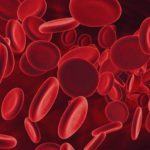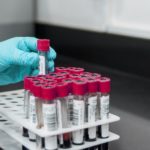Advantages of stem cell therapy – what are they?
Stem cells are the baseline cells from which a variety of cells are produced in our body. In simple terms, these cells can mature or grow into any type of cell and fill in the gap. They play an important role during early fetal life and growth.
Stem cell qualities
Stem cells can undergo cell division and produce more cells. They produce either more stem cells or become another type of specialized cell-like blood, liver, or kidney cell. So, it can be said that stem cells are unspecialized cells capable of regenerating themselves. In adults, they remain inactive until there is a stimulus for them to divide and heal tissues or organs. In some organs which are very active with rapidly dividing cells like bone marrow and intestines, the stem cells regularly divide and replace lost cells. In other organs with a more stable population of cells like the heart, kidneys, and brain, the stem cells divide only when there is local damage which requires healing.
Stem cell therapy
Collection of stem cells from the body and then transplanting them in the diseased area results in the repair or replacement of damaged tissue. Some of the common conditions include cancer, burns, loss of immune cells, fractures and renal failure. The technique of collection and preparation of stem cells for transplantation is very labour intensive.
Source of stem cells in the body
Tissues with rapidly dividing cells are a good source of adult stem cells. They include skin, intestine, bone marrow. The bone marrow has two different populations of stem cells. They are haematopoietic and mesenchymal. The haematopoietic stem cells give rise to blood cells and the mesenchymal stem cells are capable of maturing into cells of bone, cartilage, skeletal muscle, tendons and fat. They can also differentiate into heart, liver, neural and epithelial cells.
Uses of stem cells in diseases
Blood disorders: They are especially useful in case of nuclear disasters. The bone marrow cells are very sensitive to radiation. A low dose of radiation exposure may result in a reduction in the lymphocyte, granulocyte, and platelet counts, thereby making the patient susceptible to infections. Hence rapid regeneration of the depleted marrow cells is required to restore immune status to a normal level. Since the patient’s own marrow is damaged, transplantation of hematopoietic stem cells from another donor is done.
Musculoskeletal injuries: In patients who develop non-union of fractures, the mesenchymal stem cells are used to aid the healing of bone and cartilage injuries. These stem cells are transplanted on a scaffold made of hydroxyapatite which is used to fill the gap between the fractured ends. Evidence of bone healing appears in two months and functional restoration is seen in 12 to 15 months.
Spinal cord injury: This injury commonly occurs during road traffic accidents, falls, and natural disasters like earthquakes. Injury to the spinal cord results in paralysis due to damage to the nerves. The regeneration of neurons and healing of fractured vertebra can result in functional recovery. Clinical studies using mesenchymal stem cells have shown an improvement in the quality of life of these paraplegic patients.
Burns: Burns are treated with skin grafting. In extensive burns, enough skin may not be available for grafting. In these cases, mesenchymal stem cells have been shown to develop into keratinocytes which help in skin regeneration. These cells reduce the local inflammation and promote the local population of cells to mature into skin cells.
Gastrointestinal and liver damage: Mesenchymal stem cells have been used in the treatment of radiation-induced intestinal damage. They also help in liver regeneration after hepatectomy for liver cancer.
Stem cell therapy is a promising field of treatment providing hope when everything else fails. A lot of research is required and is also underway to resolve safety issues and availability for a wider spectrum of medical illnesses.




























